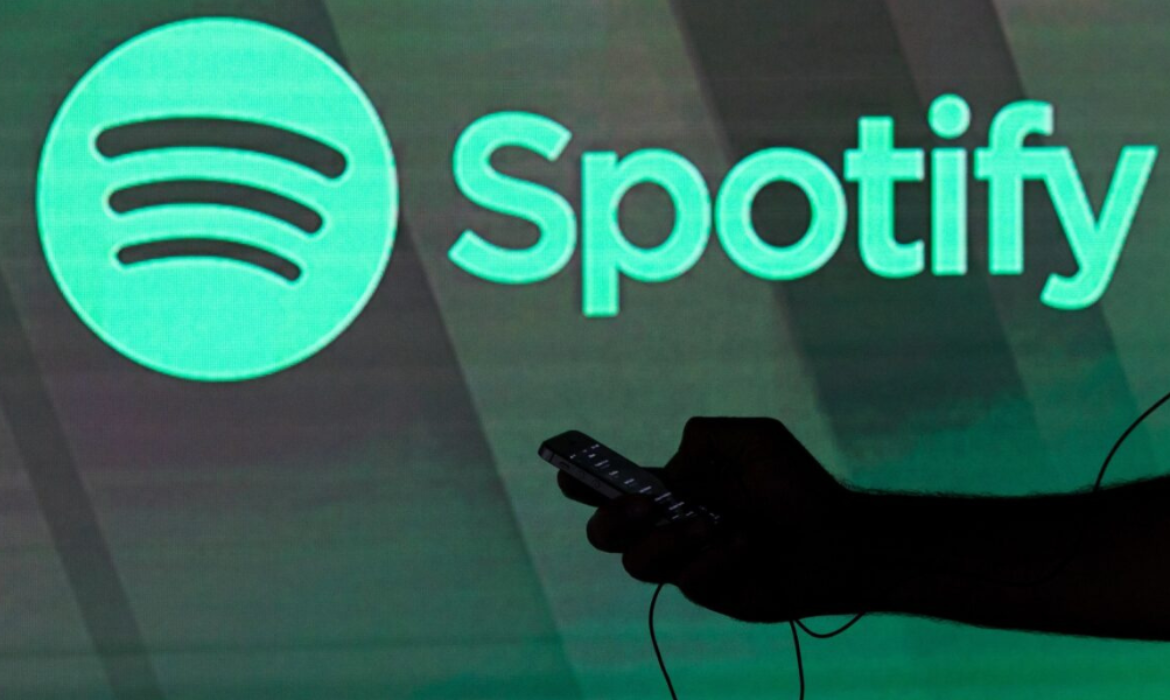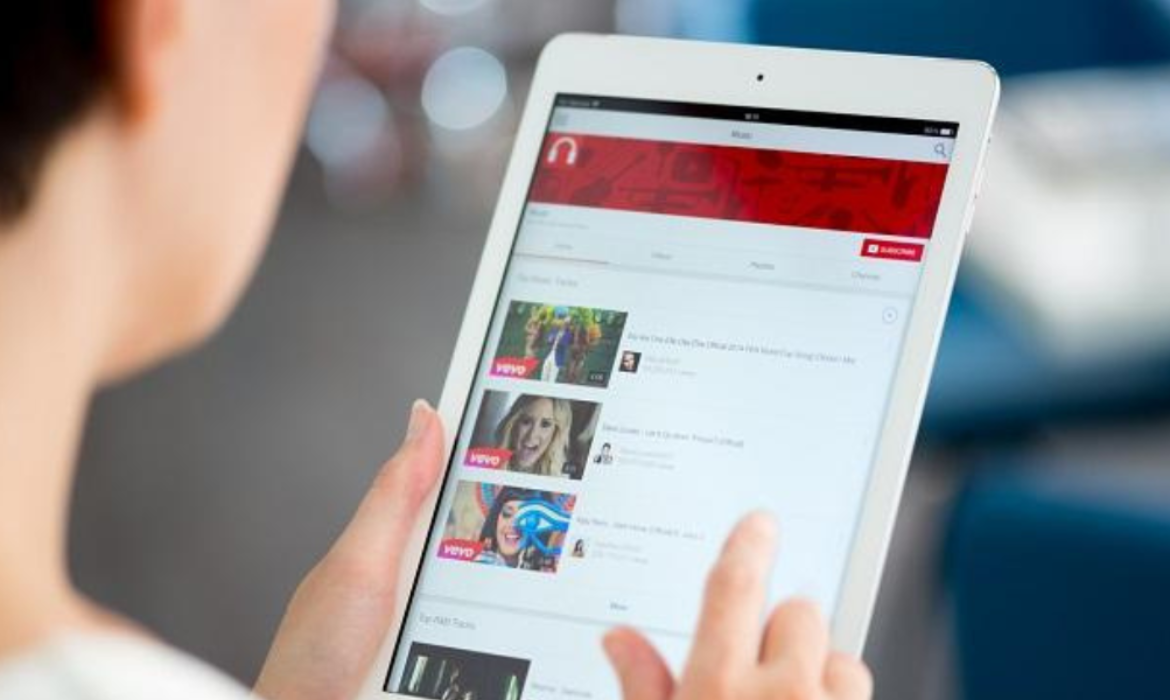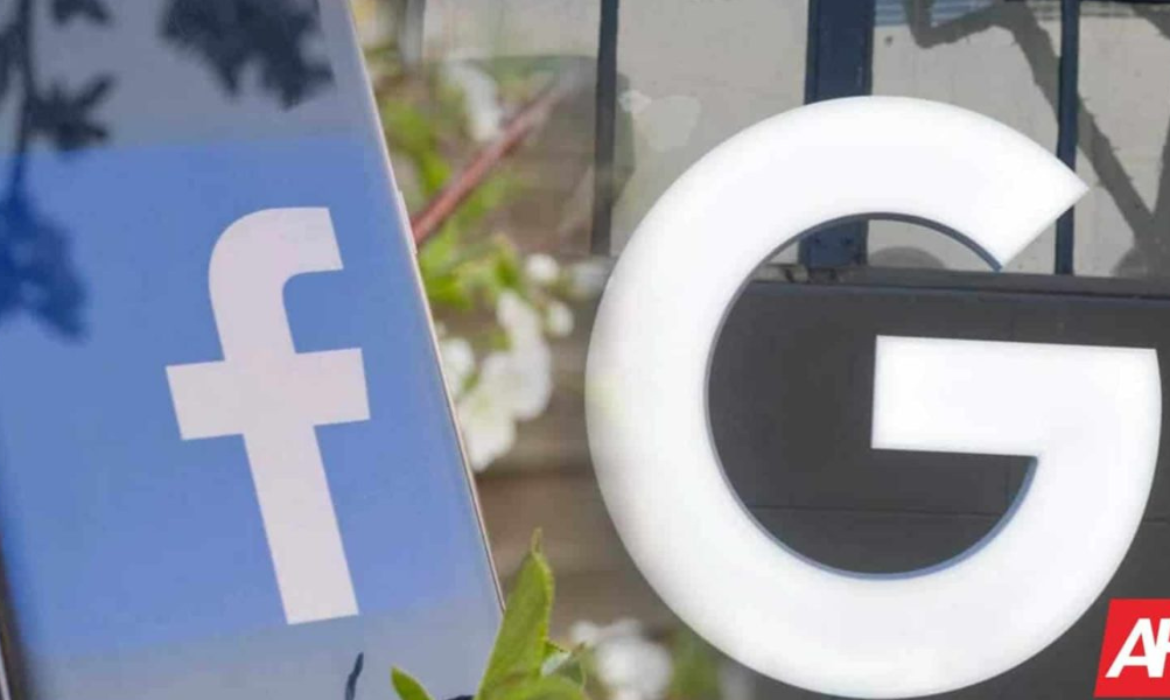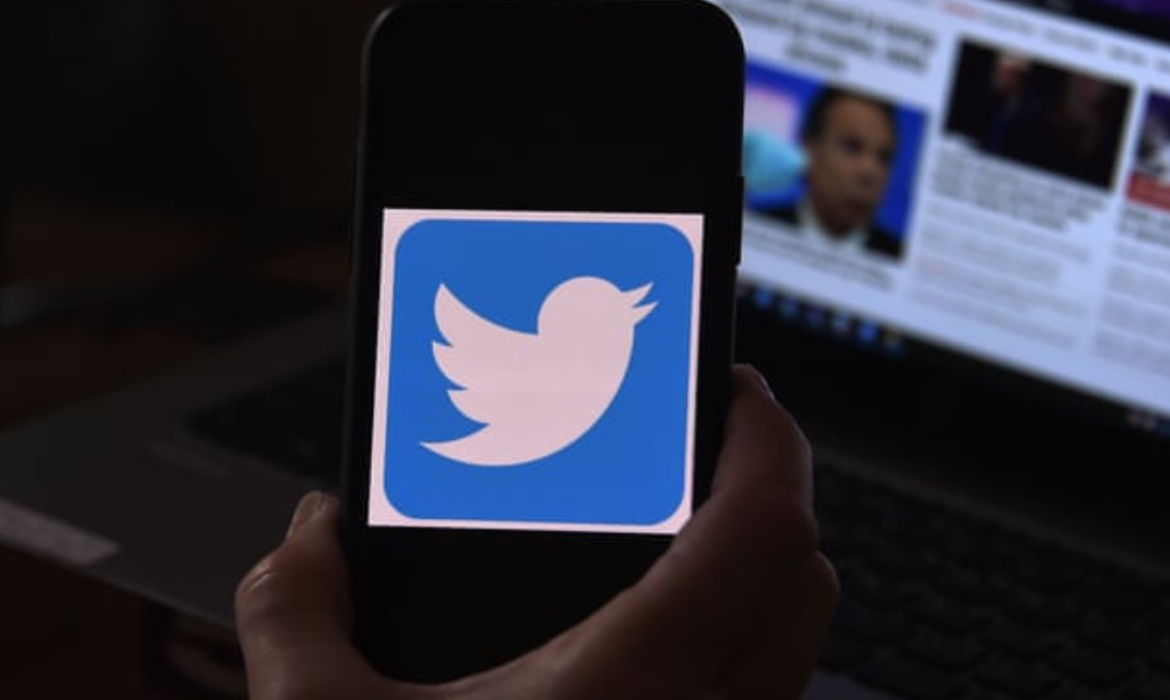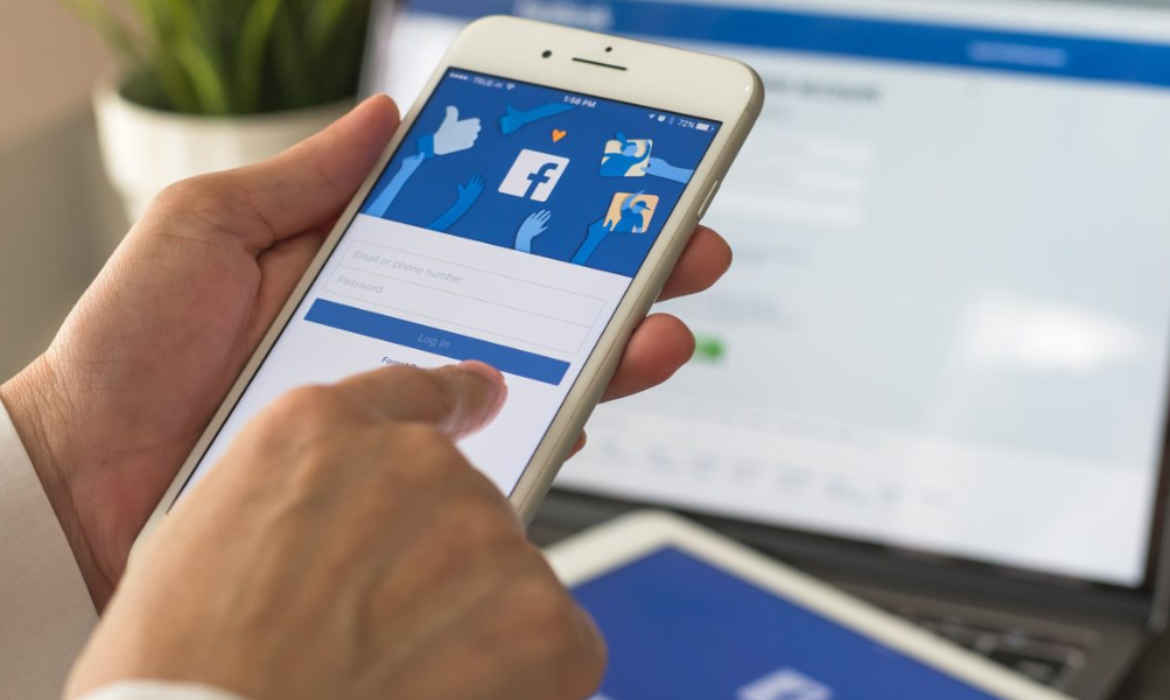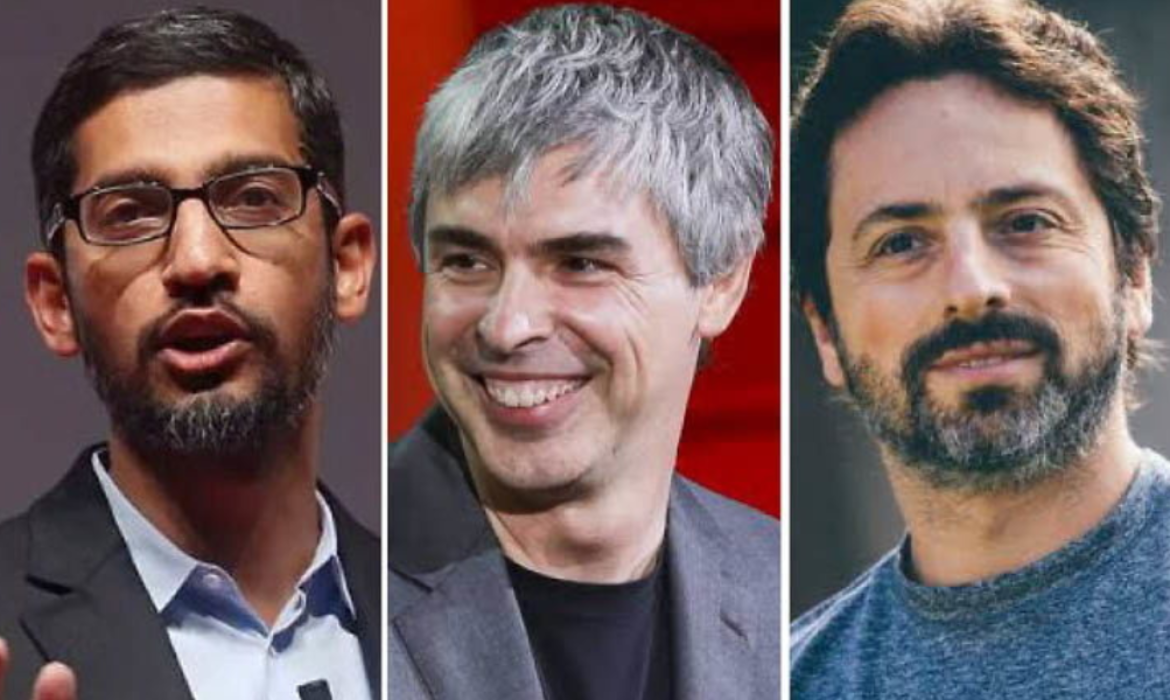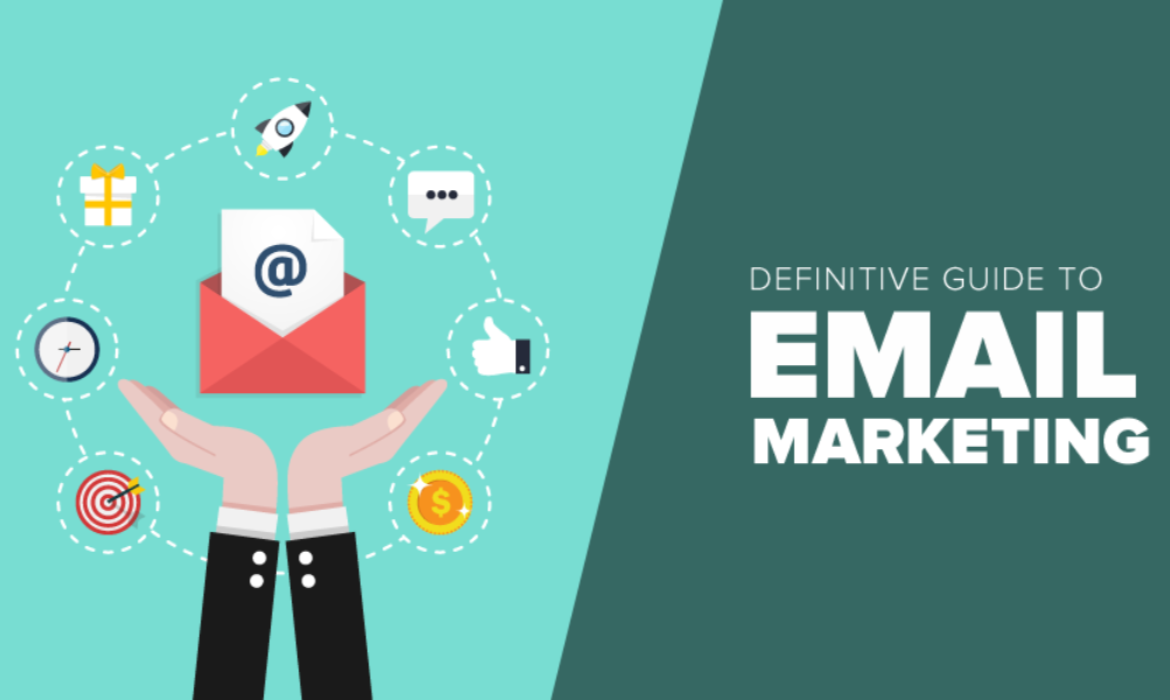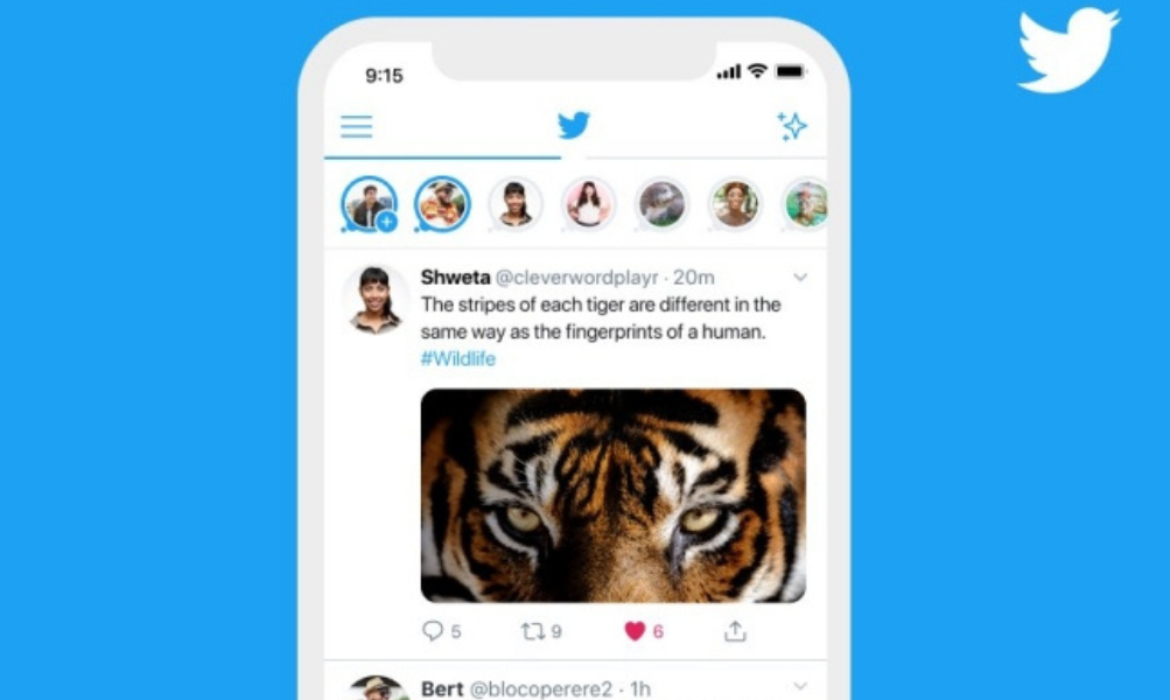Spotify Ends The Search For Promo Code With Its In-App Offers Feature
Spotify has recently announced its new feature. It will end customer hustle to search for a promo code online. Customers can buy a subscription of their favourite podcasts with on discounted prices with these promo codes.
Now, the customer will see an embedded link on the podcast. Just by clicking on this embedded link, the customer will be able to avail the promo-code. The link will automatically redirect the customer to advertiser’s website. Once the customer is on the website of the advertiser, the site will automatically detect the promo-code and will show you the discounted price.
/cdn.vox-cdn.com/uploads/chorus_asset/file/20041758/spotifyads.gif)
Image credit – TheVerge
Currently, Spotify is testing its “In-App Offers” feature. It will be a great relief for the consumer. Now, they don’t have to remember the promo code and march from pillar to post to get discounts.
According to Spotify, this is just the beginning of its interactive advertisement. The company states that they are researching for more ways to “create more of a direct funnel for brands.” It will create a strong impact and bring more live audiences to the Spotify platform in search of promo code.
Jay Richman, Head of ads business and platform at Spotify stated,
I think you could start to then piece together what a potential roadmap could look like, just based on the model with which we view this opportunity.
So, it is one step in a larger innovation path to productize the coupon code.
The first test conducted on Harry’s in the United States of America. The podcasts which participated was “Last Podcast on the Left and with Hello Fresh in Germany on the podcast Herrengedeck.” The promo code will be visible to a limited number of listeners. It will be visible only during the campaign time frame.
Spotify started inserting advertisements in podcasts from the month of January. They did this using their Streaming ad insertion technology. This technology is also known as SAI.
SAI inserts ad to the podcasts when people are listening to them. The SAI technology is advance and targets the audience based on their demographic and data-driven synergy.
Now, with SAI, Spotify is planning to expand its advertisement market in the US and some parts of Germany. SAI is a Spotify owned technology and is currently possesses an approximation of 100 monetizable shows.
It will give an upper hand to Spotify in capturing the advertiser market. Hence, it will lead to advertiser’s spending more money. Spotify will make sure that advertisers get better results for their advertisement.
For now, Spotify has opened the window for advertisement on the shows in its purview. Although, there are chances that Spotify might open the gates to the outside world and may charge revenue for the ad sales.
YouTube Tests New Shoppable Video Ads Tools
Amid a pandemic that created havoc around the world that resulted in prolonged store closures. This has led brands to advertise their products online to drive sales as more people are online now. To make things easier for them, YouTube has introduced new direct response solutions that make video ads more shoppable, drive conversion, and automate content delivery across the platform.
The idea is to make video ads the new ‘storefront’ for the brands as an increasing number of brands are using video ads that connect them directly to customers. YouTube Ads director and product manager Nicky Rettke wrote in the blog post, “Last year, the number of active advertisers using TrueView for action grew over 260 percent.”
Increase in sales with Shoppable TrueView for action
In the new test, the eCommerce advertisers can show their products in their TrueView for action ads. When the user clicks on the expansion arrow, browsable product imagery appears below the video.

Image Credit: Search Engine Land
The advertisers are required to sync their Google Merchant Center feed to the video ads, expand their call-to-action button, and drive traffic to a specific product page. However, Facebook recently released “Shops” creates on platform storefronts but keep the users and transactions within Facebook.
Retailer Aerie used Shoppable TrueView for action to increase awareness and sales for its 2020 Spring campaign and saw a 25% higher return on ad spend than the previous year and nine times more conversions compared to their traditional media mix. Rettke said in the post that 70% of people bought a brand after seeing it on YouTube.
Video Campaigns drive conversions
The next tool announced is ‘Video campaigns’, a cost-effective way to drive conversions, boost web traffic, or generate leads across the platform. It automatically brings video ads to the YouTube home feed, watch pages, and Google video partners in one campaign as well as include any future inventory that becomes available like the What to Watch Next feed.

Image Credit: Google
YouTube tested the video ad campaign with a start-up Mos to help students raise funds for college to avoid debts. Rettke said in the blog post that it saw 30% more purchases at one-third of the cost of its previous ad spend.
Lead Generation to a Video campaign
The third tool is adding lead forms to a brand’s video ad campaign. Lead forms help advertisers reduce costs and obtain potential costumers. It appears below the video ad and asks the viewers to fill the form while the ad is running.

Image Credit: Google
Automobile giant Jeep tested this approach with its Korea branch and saw a 13-times increase in completed leads at an 84% lower cost per lead as well as generated more leads.
Finally, Google has included YouTube in the Google Ads attribution report that will help advertisers identify the maximum impact across YouTube, Search, and Shopping campaigns.
Shoppable Ads, a new focus for social media platforms
Shoppable ads also considered as direct-response ads have become a major focus of all social media platforms in the pandemic when ad sales went down. Facebook introduced shoppable ads on its platform and Instagram. Snapchat has in-app shopping whereas buy groceries without leaving Pinterest. Shoppable ads are also seen on Tik Tok.
DR ads have helped Facebook, Instagram, Snapchat to maintain profits, and CPM’s. As per Adexchanger reports, YouTube sales VP Adam Stewart said,
“YouTube storefront isn’t a traditional DR advertising product.YouTube has a bustling DR business, because it’s popular for app-install campaigns, especially with mobile gaming companies.”
Direct response advertising features will be the focus of YouTube’s NewFronts presentation to advertisers. As a part of YouTube’s pitch, Stewart said the storefront isn’t meant to rival Facebook-Instagram or Snapchat commerce offerings but its natural counterpart is television.
Facebook Denies To Pay Money To News Companies In Australia.
Facebook has declined to pay Australian news agencies after the Australian government forced them to do so. According to Facebook, they would rather prefer to remove the Australian news content rather than paying money to the news companies in Australia.
As per the statement stated by Facebook, “The amount of content of Australian news contributes a very nominal part in a user news feed”. Hence, they don’t feel liable to pay a hefty amount to Australian news companies.
In a statement, they stated, “If there were no news content available on Facebook in Australia, we are confident the impact on Facebook’s community metrics and revenues in Australia would not be significant,”
This came as a threat from Facebook. Hence, could be an indication to boycott Australian news companies.
Further, they stated: “Given the social value and benefit to news publishers, we would strongly prefer to continue enabling news publishers’ content to be available on our platform,”
During these critical times, news industries are facing tough times. Most of the news industry across the globe has lost its advertisement revenue in print media. This was the most effective source of income for news industries. Many of the print newspapers were surviving on this resource of earning.
Looking at the critical condition of news companies, the Australian government intervened. They asked Google and Facebook to pay for the news content from the Australian news companies, which they share on their platform.
However, Nine Entertainment and Rupert Murdoch’s News Corp, are two of the Australian biggest media companies who are pushing this issue.
According to them, the financial crisis that News industries are suffering is due to the tech giants like Facebook, Google and other similar firms. They state that most of the advertisement revenue is digested by these tech firms and News industries are suffering severely due to this by gaining nothing.
As stated, coronavirus caused bankruptcy, in the news organizations. Several print editions had to close their shops.
Even in Australia, every major media house fired employees to save cost. Nearly 170 newspaper and newsroom shuttered or got suspended.
The ACCC, Australian’s competition regulatory, calculated that Facebook and Google combined earned around 6 billion Australia dollar(4 billion US dollar) in a year from advertising in Australia.
In a fair deal, leading newspapers demand at-least 10% of that amount to be paid to them each year.
Last year, this demand was rejected by Google by stating that they earned 10 million Australian dollars a year only by the news linked advertisement.
The two media companies are strongly relying on the facts presented by the ACCC. Also, the ACCC is hoping to find a resolution to this situation.
The ACCC aims to find a common ground between tech firms and media houses. It aims to establish a “Code of conduct” to help the two in curbing disinformation, sharing revenue, protecting user privacy and sharing data.
The ACCC is instructed to resolve this by the end of July. As soon as ACCC find a resolution, the Australian government will implement the final code.
Twitter Tests New Feature to Limit Sharing of Unread Articles
- Twitter announced that it will test a new feature that will prompt to encourage users to read an article before sharing.
- The new feature will only appear for U.S based Android devices for now.
- As per the Twitter Support team, the platform will only check if the user has clicked the article link on Twitter and not anywhere else on the internet.
- Twitter aims to empower healthy and informed public discussions with this new feature.
Twitter to experiment with a new feature that prompts users to read articles before sharing, is the latest effort to curb the spread of misinformation on the platform.
Sharing an article can spark conversation, so you may want to read it before you Tweet it.
To help promote informed discussion, we're testing a new prompt on Android –– when you Retweet an article that you haven't opened on Twitter, we may ask if you'd like to open it first.
— Support (@Support) June 10, 2020
Twitter product lead Kayvon Beykpour commented upon the announcement of the feature testing,
“It’s easy for links articles to go viral on Twitter. This can be powerful but sometimes dangerous, especially if people haven’t read the content they’re spreading. This feature (on Android for now) encourages people to read a linked article prior to retweeting it.”
This Is An Old Ongoing Problem
The problem of users sharing news based on headlines is not new. A 2016 study from computer scientists at Columbia University and Microsoft found that 59% – nearly two-thirds of links posted on Twitter by users are shared without opening the articles.
During the pandemic, the social media giant has issued many misinformation warnings to curb the spread of any fake news -that includes one against the U.S President Donald Trump. This move led to Trump issuing executive orders targeting social media companies.
Will It Impact The Bots?
Twitter has tried many times before to spot the spread of misinformation. Like Facebook and other social media platforms, it has come scrutiny for the content it promotes.
Twitter’s solution is not banning retweets but tries to nudge the users to rethink their actions on the social network. Recently, in May it launched a feature that allowed users to limit who can reply to their tweets. It also rolled out another feature to hide specific replies to tweets.
However, the main problem is ‘bots’. According to a paper published in AAAI, “Increasing evidence suggests that a growing amount of social media content is generated by autonomous entities known as social bots.”
For instance, recently, new research reported that roughly half of the twitter accounts that discussed ‘Reopen America’ were bots. The AAAI paper also estimated that between 9%-15% of active Twitter accounts exhibit social bots behavior – nearly 49.5 million of its 330 million users. This new feature will impact the bots and might make it difficult to retweet any content.
Facebook Is All Set To Link Wikipedia To Its Platform
Facebook recently announced to introduce a “Knowledge” feature to its platform. This feature will link Wikipedia to Facebook. This culminates in helping users to gain knowledge directly from the platform.
The feature is still under testing! However, people will be able to use it on iOS, Facebook web and mobile application.
Any Facebook user now will be able to find information about anyone on Wikipedia, directly from Facebook. The feature will portray information on its side panel.

Image credit – Twitter
The feature is a great step in identifying and removing false information shared by people on Facebook. As, for most people, Wikipedia is a trusted source for their information.
This will surely help in building people’s trust in the information shared on the platform.
An illustration of this feature is shared by Matt Navarra on his Twitter handle:
New? Facebook shows Wikipedia snippits in search results
h/t @jc_zijl pic.twitter.com/zcbQJmauhE
— Matt Navarra (@MattNavarra) June 9, 2020
Hence, this is surely a huge step for Facebook. Now, without leaving the platform, people will be able to access Wikipedia.

Image credit – What A Future!
The feature is somewhat similar to Google’s “Knowledge Panel”. Google launched this feature in 2012.

Image credit – Yoast
For example, You are looking for information on 5G. To help you with your search, Facebook will highlight a Wikipedia link. From there, you can get some deep insight into 5G. Instead of trusting the information shared on its posts, you can research things on your own. It will help in avoiding the spread of false information, on the platform.

Image credit – Dailymail
In the past decade, Facebook suffered excessively due to the propagation of false information on its platform. Due to its algorithm, controversial posts used to gain a lot of fame on the platform. A rumored post gains a lot of gossips!
These posts gained popularity in the search results. So, Facebook became a platform for the deception!
Although, in recent times, a lot has changed with Facebook. It has evolved on every front. It is all set to improve its reputation, and credibility of the information shared on the platform.
According to Facebook, the feature is limited in availability for now! It is mostly available in some parts of Europe.
We all must understand this!
During these tough times, it is really important to provide correct information. Since Facebook is a home for its billions of users, it is its moral responsibility to make sure that no false information is propagated over its platform.
Even small misinformation can create a ripple effect, in a negative direction, during these adverse times.
People trust the information shared on social media platforms like Facebook, Twitter and Instagram. Social media is developing perceptions of people.

Image credit- Pinterest
According to Dr Stephen Croucher, who is a lead author and a professor of communication at Massey University in New Zealand:
“In the case of COVID-19, social media, and other media, were and are being used as venues to share and build ideas, values and morals, many of these are very positive, but some are not.”
Exit Lockdown. Enter Reality – What Comes Next?
10 weeks. 70 days. 1680 hours. Far too many Netflix binges to mention. Meaningless stats at any other time, but in the context of the coronavirus, it’s a stark reminder of our time in lockdown. It’s strange to think that we’ve spent over two months in self-isolation, practising social distancing and learning how to re-interact with everyone around us.
Businesses have moved online, companies have shifted their models, employees have become tech evangelists quicker than anyone would have anticipated. In essence, we’ve been living a do or die mentality during this pandemic, so now that economies around the globe are beginning to open up, what comes next?
I could put my Nostradamus hat on again and make a load of predictions, but really, what’s the point in that? No-one knows what lies ahead, the situation is changing too quickly, with multiple factors at play and an unpredictable virus that doesn’t want to play by society’s rules. The only thing we can be certain of right now is uncertainty, as annoying as that is to admit. We can’t control the environment in which we operate, but we can look at what’s happening to use as a barometer for the trends currently shaping our industry.
The Golden Ecommerce Opportunity
“While the world falls apart, the stock market – and especially Ad Tech – keeps on pumping”. Considering the ripple effect that has been felt throughout every sector, at first glance, this may seem like a stretch, however, the sentiment on Wall Street surrounding digital media, and by extension, Ad Tech is undeniably positive.
Facebook reported flat revenue year over year in April, not usually a cause for celebration, but amid nationwide lockdowns, investors are confident in the platform’s ability to rebound. Similarly, Google and Snapchat beat analysts’ expectations, however, a tougher Q2 is expected. It’s a realistic snapshot of the peaks and troughs that have become commonplace during the pandemic, and as consumer behavior patterns continue to change, the major walled gardens will find new and more innovative ways to gain market share.
You only need to look at how the duopoly has applied itself during the crisis. Gold stars all around. Announcements from Facebook have come thick and fast over the past few weeks, with everything from their Giphy acquisition to the launch of Messenger Rooms and its sister app, CatchUp for video calls, creating a buzz. And amid the fluff – their Bitmoji-inspired Avatar app is a prime example – came what we were all waiting for: a real and very viable move into online commerce.
Facebook ‘Shops’ will allow small businesses to build online stores on both Facebook and Instagram, and in the future, will extend this feature to its Instagram Direct, WhatsApp, and Messenger platforms. Products can also be tagged during live broadcasts, and if Zuckerberg’s estimations are accurate, with some 800 million people already engaging in live video sessions daily across Facebook and Instagram, the opportunity here is huge.
According to Deutsche Bank’s Lloyd Walmsley, Shops has the potential to drive as much as $30 billion in incremental revenue – the bulk coming through further advertising opportunities. This makes sense when you consider Facebook’s rationale in enabling eCommerce across all of its platforms in this way; the closer the consumers are to checkout, the more willing advertisers are to spend. That’s probably why Bezos is laughing all the way to the bank as Amazon’s ad business continues to skyrocket. Of course, Amazon isn’t immune to the fallout either. Investors were told in no uncertain terms to ‘take a seat’ during the Q1 earnings report, amid challenging trading conditions, a pullback from some advertisers, and pressure on price. Still, with a reported 44% growth in Q1 and continuing strong traffic to the site, Amazon will be a thorn in the duopoly’s side for a long time yet. Google, much like Facebook, is looking to guard against this Amazonian invasion. The platform recently added organic listings to its Shopping site, offering retailers exposure to millions of daily shopping searches, while users will have access to a wider range of purchase options. On the surface, it’s likely to gain Google’s market share and advertising dollars over time and has the added bonus of taking aim at Amazon’s convenience model by competing on variety.
Even ‘smaller’ companies are looking to get into the retail game. Criteo continued its move away from retargeting, launching a self-serve ad platform for its retail media network. It’s particularly shrewd given how valuable retail media is right now. As eCommerce continues to surge in lockdown, traditional media budgets are being funneled this way to capitalize on the opportunity in real-time. The ‘Always On’ Mentality at the outset of the coronavirus, programmatic was one of the first to be hit. Brands paused their online campaigns; the default ‘easy’ option, as opposed to reviewing their other marketing channels. However, programmatic has proved to be adaptable, resilient, and flexible in the wake of continued challenges and pressures. It is already rebounding, and I believe digital and eCommerce will take an even larger share of overall advertising in the long run.
Still, even prior to this, publishers were being cautious with their investments and not capitalizing on the programmatic opportunity quickly enough. Of course, change has now been forced at every level. Digitization is a requirement and businesses no longer have the luxury of waiting things out. The nature of operating in 2020 is that you have to be ‘always on’. Adapt. Review. Adapt. Review. There’s no room for complacency.
For my part, I’d say on balance, I’m a pretty optimistic person. Look for the opportunity, acknowledge the risk, but be ready to take action, and that hasn’t changed in the past three months. What we’ll all need to be careful of as things begin to move again is abandoning the ‘critical change’ mindset we have adopted as standard during the pandemic.
Jeff Bezos “Day 2 is stasis. Followed by irrelevance. Followed by excruciating, painful decline. Followed by death. And that is why it is always Day 1.”
It’s probably more morbid than I would have put it, but he has a point. No more stasis. Let’s make every day count.

Ayman Haider
CEO at MMP World Wide – Board Member at IAB MENA
Wassim Mneimneh is a CEO at MMP Worldwide and a board member at IAB MENA. A dedication of a lifetime to career in advertising with a passion for tech, and focus on driving the transformation, implementation, and conversation on the value of programmatic and its ability to rebuild trust and safety for the media industry.
Snapchat’s New Feature ‘Snap Minis’ Will Be the Next Hot Thing in the Market
Snap introduced an array of new products and partnerships for Snapchat including original shows, Minis, new lenses, new navigation bars, and games at the 2020 Snap Partner Summit.
The highlight of the event was Minis – a suite of miniature apps developed by third parties that will run inside Snapchat. This will be integrated into the Snapchat chat window that would allow users to buy movie tickets, shop with friends or meditate.
In an interview with The Verge, Snap CEO Evan Spiegel said,
“Let’s say you’re getting ready with your friends, or your school dance is two weeks from now — you can actually shop together with your friends, which I think could be a really fun experience.”

Image Credit: Snap
What Snap Announced:
-Minis are web-based apps built on HTML-5 for Android and iOS.
-Minis will start rolling out next month on Snapchat with the first seven minis.
-A mini-app by Coachella to coordinate and plan a festival line up with the friends.
-A mini version of Headspace to meditate and send encouraging messages to friends.
-A mini-app by Tembo to create flashcards for studying,
-A mini-app by Atom to buy movie tickets, pick seats, and choose timings.
Why They Matter:
– The inclusion of mini-apps will increase Snapchat’s functionality and potentially making it a one-stop app like WeChat for GenZ.
– The main purpose behind creating minis is creating eCommerce avenues as its main competitor WhatsApp has already ventured into digital payments and shopping.
– The company’s growth is stable in the messaging space but is not big enough to compete with the likes of Facebook and Google for ad revenues in the long term.
– As a result, it plans to build an ecosystem that revolves around its camera technology to unlock new revenue generation options.
What’s New For Brands:
– Brands especially looking to target the younger audience should consider developing a Snap Mini to provide services and ensure easy accessibility to Snapchat users.
– It is easy to maintain a mini-app than a full-size app as brands can leverage the Snapchat’s user base to gain traction.
By The Numbers:
– These miniatures applications are compared to WeChat’s mini-programs that generated $113 billion for Tencent last year, according to The Verge.
– Snap execs revealed that it reached over 229 million daily active users on average in the first quarter of this year, with over 100 million in the U.S. alone. (That’s larger than TikTok or Twitter’s U.S. footprint.)
And, there’s lots more from the 2020 Snap Partner Summit:
1. Camera Kit: It allows developers to bring Snapchat’s AR capabilities and engagement into their own apps that enable apps like Squad to create a co-viewing experience while video chatting with friends.
2. Dynamic Lenses: It allows developers to bring real-time information from their app into Snapchat lenses.
3. Bitmoji For Games: A cross-platform avatar for gaming on mobile, PC, or console. This means it is easier for a user to maintain a uniform gaming identity online by using one avatar across all games.
4. Snap Games: An interactive way for friends to play the game on mobile which includes “Bitmoji Party.”
5. Lens Studio: A free and new desktop feature that allows developers to bring their machine learning models to power lenses. For the first SnapML creations, the company partnered with Prisma, Wannaby, and others.
6. Local Lenses: A new feature that allows users to create 3D worlds on top of their building and or decorate nearby buildings with colorful paints and have a new AR experience.
7. Scans: Snap expanded its scan platform and announced new partners for plants, dogs, and nutrition information. Plant Snap will help the user identify 90% of all known plants and trees. Dog Scanner to identify 400 breeds, Yuka will launch a nutrition scanner to provide ratings on the quality of ingredients in the packaged foods and Louis Vuitton will help users scan the monogram to be transported into the inspiration behind their latest collection.
8. Voice Scan: It allows users to issue voice commands to find lenses.
Google Removed TikTok Clone Zynn From Playstore!
Is Google Playing Partial By Favouring TikTok?
Recently, Google removed Zynn from Google play store. Zynn was a successful competitor and a clone of TikTok.
Although, the reason provided by Google for removing the app was the copyright issues. Recently, several incidents have been registered, where Google is seen favoring TikTok in different ways.
Zynn was a clone of TikTok. Hence, Zynn had similar policies and interface, also that of TikTok.
TikTok rival companies created Zynn to compete against TikTok. In a short period, Zynn was gaining huge success. It was nominated as the best application on play store and was among top 10 free applications on Google play store.

Image Credit – Three Pixel lab
Zynn provided money to its users for signing up, watching videos and referrals to friends.
It’s not just the first incidence where Google favored TikTok.
In another incident, due to a dispute between members of the YouTube community and TikTok, the rating of TikTok fell to 1.2 on Google play store.

Image credit – The Tribune.
Users started reporting TikTok and reviewing it with one-star ratings. Soon, Google decided to intervene. Hence, it leads to deletion of user ratings of millions of users. Due to this, TikTok ratings resurfaced to 4.4.
According to Google, the reviews posted mostly came from fake accounts. Although, it is interesting to know that there are millions of fake accounts working on Google play store raise a question on the security front.
Google just didn’t stop there! Soon after deleting the reviews, Google deleted “Mitron”.
Mitron launched in India to compete with TikTok. Mitron was a huge success, as it gained a user rating of 4.4 with 5 million users.

Image Credit – The Quint
However, Google decided to bring down the application.
The reason provided by Google for removing Mitron was related to its poor functionality.
According to Google, Mitron violated its spam policy. They stated that the application didn’t fulfil the minimum functionality policy. Also had repetitive content, and failed to produce any original content of its own.
Certainly, India contributes a huge user database on Chinese application, TikTok.
Recently, due to the current pandemic events, people of India decided to boycott Chinese products. Several actions were taken in the process. People made sure that the boycott proves to be successful.
Soon, Twitter flashed with the hashtag of #BoycottChineseProducts. As a result, people started uninstalling Chinese applications, on their devices. This led to the creation of an application. This application was capable of determining the Chinese application installed on phones.

Image credit – The IndianEXPRESS.
However, Google stepped up and took down the application.
According to Google, no application can insist on people to remove other application from their devices.
Google’s policy reads, “We don’t allow apps that attempt to deceive users or enable dishonest behavior including but not limited to apps which are determined to be functionally impossible. Apps must provide an accurate disclosure, description, and images/video of their functionality in all parts of the metadata and should perform as reasonably expected by the user. Apps must not attempt to mimic functionality or warnings from the operating system or other apps. Any changes to device settings must be made with the user’s knowledge and consent and be easily reversible by the user.”
OneTouchAppLabs an Indian startup developed the application. The company confirmed on twitter that the application doesn’t ask people to remove applications on their mobiles. The purpose of the application was to educate people.
In just a period of 10 days, the “remove china application” gained huge success. Millions of people downloaded the application. However, the people who have installed the application can keep using the application, but no new users will be able to download the application.

Image credit – Technology
According to a cybersecurity expert: “The app scan focused on the installed android application package (APK) only. Hence, it doesn’t affect any change in stored personal data.”
After monitoring the current scenarios, It is difficult to understand the roleplay of Google.
It is difficult to decide if Googles’ decisions are effective? Or is it using its policies to favor TikTok, to create a TikTok monopoly in the market?
How Email Marketing Will Help Your Business Grow in 2020
Does Email marketing still exist in times of social media, artificial intelligence, chatbots, videos? A thought to ponder.
If you feel email marketing has lost its charm, then you are far away from the truth.
The truth is, email marketing is growing and email campaigns are still the best strategy for brands and businesses.
Here it is, Why?

Image Credit: Oberlo
As per data by Statista(2020), In 2019, the email users were 3.9 billion users and are expected to grow to 4.3 billion users in 2023, which is half of the world’s population. This clearly shows email marketing is an opportunity that should not be missed.
The above infographic on Email Marketing Stats 2020 provides facts and figures about the email market which is still robust and one of the best marketing strategies.
What Is Email Marketing?
Email marketing is more effective than SEO, affiliate marketing, or social media because it has a direct line with the audiences. It helps you connect with your leads, nurture them, and convert them into customers.

Image Credit: BackLinko
However, with the growing fervor of TikTok Facebook, Snapchat, will this old school tactic still work?
Emails have a better reach than social media and converting a prospect into a buyer. This shows email leading social media. Email is 40 times more effective than Facebook and Twitter combined. (McKinsey)
A third of customers who have subscribed to the retailer’s newspaper is a direct result of email marketing messages. (E-marketer)
These numbers are nice to know but you are still wondering, how are email marketing campaigns important in 2020?
Well, that’s what the next chapter is all about.
How Is Email Marketing Important In 2020?
With the booming popularity of social media and search, the importance of free emails in email marketing is higher than ever.
Let us comprehend the value of email marketing in 2020.
1. Everyone uses Emails:
Young people use email for several things – social media and personal expenses, mailing lists, and brand promotion or business. So, everyone has a valid email address.
2. Emails are easy to design and create:
An attractive and eye-catching email campaign for a small business budget with a reputed email marketing service provider can create wonders and similar to big brands.
After finishing designing the newsletter or free emails, businesses can quickly start to use email campaigns for promotion.

Image Credit: uCookies
3. Email marketing links all other channels
Email campaigns are a direct line of communication with the audience and a suitable way to promote marketing strategies.
Social Media
Most email service providers have footers with social media icons at the bottom that includes links to LinkedIn, Facebook, or Instagram. Subscribers can access those links and share the campaigns by clicking on it. Also, brands can share the reviews, posts on the social feed so subscribers can connect with the brands online.
For instance, the example of Urban Outfitters is a visually appealing email that highlights their most-liked Instagram posts. Also, note the share buttons at the bottom of the email.

Image Credit: Really Good Emails
Content Marketing
77% of people prefer to get permission-based promotional messages via email campaigns. To start with, first, a sizable email list is to be prepared. There are several ways to do this like giving something away for free or offering a newsletter update, videos, research report, infographic, or valuable content.
Make good use of content with interesting pictures and custom RSS feeds. For instance, the US outdoors always include interesting content in their email campaigns.

Image Credit: Emma
Webinars:
Brands can promote webinars on emails to their subscribers who are genuinely interested to hear and respond.
Performance Analysis
Email service provides information on how to improve future email campaigns and learn about subscribers. However, this will be a paid service.
Analytics aids in keeping a track of active and engaged subscribers and identifying trends as well as new markets. This data can help in retargeting campaigns and use marketing resources in the right way.
Capitalizing On The Data Collection:
Email marketing is one of the most scrutinized marketing methods in the post GDPR world. 78% of people say they are likely to trust companies with their personal data if they use it to personalize their experience through different channels like emails.
Emails give access to understand subscribers’ behavior and learn about their habits and interests to create customized email campaigns. Personalized email campaigns can be created by conducting surveys to collect quality data from active subscribers.
4. Encourage more subscriber participation:
Marketers gain the trust of the subscribers when they encourage more participation from them and let them control their inbox. Put a preference center link at the bottom of the email campaigns and prompt new subscribers to fill it.
A preference center allows the subscribers to tell the brands on how often they want to be emailed and what type of content they prefer. Below is an example of a preference center by Brooks Running.

Image Credit: Emma
5. Stay updated with automation and technology
Email service providers always give access to the latest automated features to give an enriching experience to the audience in the following areas:
-Segmentation
-Post-sales communication
-Re-engagement
-A/B Testings
Best Email Marketing Campaigns
With in-depth details on the importance of Email marketing, in the next chapter, we will see the best email marketing campaign examples.
1. BuzzFeed
Email Marketing Campaign: “Buzzfeed Today” Newsletter
Newsletters are Buzzfeed’s top sources of traffic. Buzzfeed has amazing, punchy, and short subject lines. They have awesome preview text that compels the reader to open the email.
If their subject line is a command, the preview text is the logical elaboration of the subject line.

Image Credit: Mail Floss
Their newsletters are from politics and daily news to DIY and cooking. They cover different audiences as they know exactly what to recommend to whom because of their email segmentation.
2. Amarso
Email marketing- another way to approach the cart abandonment.
If your product is enticing then put it at the center of your email marketing campaign directed at the customers who shopped but didn’t purchase. In this two-step email marketing campaign, Amarso is doing the same thing.
The 1st image is sent to the shoppers after an hour of shopping for those products whereas the 2nd image is a reminder of Amarso’s amazing products seen a few days back.

Image Credit: MailFloss
3. Airbnb
Short, Crisp and Communicative Feedback Survey in their Email Campaign
Their email campaign is short, crisp, fresh, and minimalist with a clear objective. Their emails are straight to the point and with a clear CTA. The email campaign looks good and engaging. In every email, you will get guides to different cities.

Image Credit: Mail Bakery
Email Marketing Platforms or Email Service Providers (ESPs)
There are many email marketing platforms but obviously, there is no single ‘best email service provider’. The best option depends on the objectives, goals, features, and list size of the marketers.
In this chapter, I am reviewing five of the top Email Service Providers. The features, pricing, pros, and cons of each email marketing platform are highlighted to help the marketer choose the best option for you.
1. Mail Chimp

Image Credit: Formget
Features
-It is the most popular and leading email marketing platform.
-It has an excellent dashboard with prebuilt templates, reports, lists, and more.
-There is email automation, better integration, optimization, and analytics.
Pricing
-A forever free plan allows 12,000 mails every month to 2000 subscribers.
-There are 3 packages based on features and the number of subscribers.
-Essentials for $9.99, standard for%14.99, and Premium for $299 are email marketing plans.
Know more about pricing
Pros
-It is best for small and medium-sized businesses at an affordable cost.
– It can handle large volumes of emails.
-The messages can be sent to email clients as well as for promotion on Facebook, Instagram, and other social media platforms.
-It has easy to use WYSIWYG editors and can access reports on the open rates clicks, spammed, unsubscription.
-It has friendly customer service and excellent email analytics.
-It helps you to customize the tools for your business with over 300 integrations.
Cons
-The regular updates and reconfiguration disrupt the entire working system as users have to understand and adapt to the new changes.
-Apart from the chat function, phone support is not provided.
-The individual addition of email contacts is cumbersome and has limited segmentation features.
-Emails sent via Mailchimp often goes to the promotion tab of Gmail or spam at times.
2. Mailjet

Image Credit: Formget
Features
-It has the best real-time dashboard and is preloaded with free responsive email templates and newsletters
-There are advanced reporting features like to track deliveries and know user actions.
Pricing
It has a free email marketing trial for 30 days for 6000 emails a month and 200 emails a day. There are 3 Packages like Basic, Premium, and Enterprise plans for each month.
Free email marketing trial for 30 days for 6000 emails a month and 200 emails a day.
Know more about pricing here!
Pros
– The dashboard is incredibly innate and the drag and drop editor option allows users to create different email templates.
– It provides a report that shows usual data including bounces, clicks, and so on.
-It is Reasonable and economical pricing compared to the competitors.
-It’s an all in one platform to send, track, and deliver marketing and transactional emails without any additional cost.
Cons:
-There are limited designs for email templates and cannot store images.
-Unsubscribing inactive users from the list is tiresome using Mailjet’s removal interface.
-The segmentation options are limited. Eg. One can run a campaign but cannot set conditions like whether a recipient has/unopened/bought the product.
3. Active Campaign

Features
– It has an intuitive email template builder and advanced marketing automation
-It has features like segmentation, machine learning, CRM and sales
-It has the best campaign tracking, free image hosting, email funnels, and autoresponders.
Pricing:
There are no free plans available but an email marketing test run can be done for 14 days. Active’s pricing packages are affected by two factors: contacts and features. It has 4 packages available – Lite for $9, Plus for $49, Professional for $129, and Enterprise for $229.
Know more about pricing
Pros:
-The dashboard shows the full history of your contacts and gives access to real-time reports that features display tracking of essentials like geolocation, clicks, opened rates, unsubscription details.
-It has great integrations with other tools like Facebook Ads, Gmail suite, websites, and more.
-The Lead scoring helps to prioritize accounts for the sales team and has dynamic content.
-It offers a free migration service. Unlike other tools, Active Campaign doesn’t charge you to move data from one email marketing tool to another.
Cons:
– The pricing isn’t the lowest but it is worth the value.
– The layout is not user friendly and many good features cannot be accessed seamlessly by the users.
– It becomes difficult to handle large volumes of emails.
4. Klaviyo

Features
–It helps e-commerce marketers to build, measure, and optimize email campaigns.
-It has a hassle-free dashboard that showcases all the recent campaigns based on revenue, days, and more.
-The segmentation of the platform is excellent based on the behavior and transactional data.
-Start your campaigns with pre-built email templates that can be customized.
– Use an autoresponder to send automatic emails to the audience.
Pricing
It offers a free trial of up to 250 contacts and can send 500 emails. The plans are devised based on the number of contacts. Pricing increases with the number of contacts- the maximum pricing option is up to $1700 per month for up to 146,00 contacts and a minimum of $25 for 500 contacts.
Know more about pricing
Pros
-It is easy to set up and user friendly.
-Enhance the eCommerce business on integration with Shopify.
-Create Personalized product recommendations for post-sale engagement.
-Visually transform email workflows and sign up forms to collect leads.
-Access to marketing automation to follow up with customers after they abandon a purchase.
-Integrate with the Facebook custom audience and create a comprehensive marketing campaign.
Cons
– The pricing is aggressive and high for smaller businesses.
– For beginners, the interface can be challenging initially.
– Limited customer chat support and no phone support.
-It can be difficult to use while integrating with Magneto and checking analytical information.
5. Gmail

Features:
-Everyone’s favorite Email marketing tool.
-A free, advertising-supported email service offered by Google.
-It’s a part of Google G Suite with 15 GB storage, color-coded inbox, and filters.
-Appropriate for all types of businesses.
-GMass extension can be used to send personalized and mass emails to every email address in the Gmail account.
Pricing:
It is a free service.
Pros:
-It is free, stable and fast
-It provides 99.9% spam and virus protection.
-It has Integration with the whole Google suite.
-Secured web platform and can be customized to an extent keeping it clean and simple.
-Integrated with Hangout that helps to directly reach the customers via call or chat.
-Excellent handling of large attachments and volumes of emails.
-A business email address can be used by logging into a Gmail account.
Cons:
-It might not work easily with a few desktop software or enterprise applications.
– There is no backup of emails in the inbox.
-It is connected to Google Drive storage, therefore, if it is full then it creates problems in receiving emails.
-Many client emails get sent to spams.
-It collects mail from the hosting server and will not collect email quickly.
Why do many use Gmail for email marketing?
- It has spam filters that reduce the risk of domain spoofing, phishing, and other malevolent practices.
- It has great features and saves time in searching for mails and referencing old mails.
- Gmail users are highly engaged which is the key point in email marketing.
How to use Gmail to send a newsletter?
GMass turns your regular Gmail account into a powerful email marketing platform. Without GMass, Google’s platform allows you to send email marketing campaigns to limited people in your G-suite.
Using GMass helps you send emails through the world’s highest delivering servers and gives the highest open rates. It also includes features like
GMass provides access to following email marketing features to your Google or Gmail account:
-Open tracking,
-Click tracking,
-Mail merge
-Message Personalization,
– Mass emails or bulk email service
-Scheduling.
-Create a mailing list
Best Practices To Follow For Email Marketing

Wrapping Up
The importance of email marketing has grown over the years. With all the insights provided in the article, here are a few takeaway points:
-Email is easy to integrate digital marketing campaigns.
-Email marketing gives a scope to build personal relationships with users.
-Email marketing is constantly evolving implies that email marketing strategies should also change with time.
-Technological innovation continues to improve email marketing and the way subscribers are engaging with emails is also changing,
-This proves that email marketing is here to stay and email marketing automation is the new trend that is catching up. Time to up the game and think about the new techniques and strategies for your next campaign.
Learn more: Facebook Is All Set To Launch Its Toolkit For “Email Marketing”.
Twitter Introduces Fleets – The 24-Hour Disappearing Posts
- After its first launch in Brazil in March, followed by Italy in April, Twitter has rolled out its version of Stories’Fleets’ for users to post ephemeral content in India.
- Fleets are self-deleting tweets which will disappear after 24 hours without likes, retweets or replies. People can only react with DMs to the Fleets.
Nearly, 7 years ago Snapchat introduced a feature ‘Stories’ to their platform that enabled users to share content with friends and followers that would disappear after 24 hours. Soon, a similar feature was added to Instagram and WhatsApp as Stories and Status respectively by Facebook.
Now, its Twitter’s turn.
How does it matter
India is the 8th largest market for Twitter based on usage and has around 13 million users. Twitter users in India can now have access to the feature ‘Fleets’ and in the coming days, it will be available on iOS and Apple.
Namaste! Starting today, Fleets are coming to India. If you’re in India, check it out and let us know what you think! #FleetsFeedback 🇮🇳 pic.twitter.com/U6QiHynm1U
— Kayvon Beykpour (@kayvz) June 9, 2020
Testing, testing…
We’re testing a way for you to think out loud without the Likes, Retweets, or replies, called Fleets! Best part? They disappear after 24 hours. pic.twitter.com/r14VWUoF6p— Twitter India (@TwitterIndia) June 9, 2020
Twitter is taking a staged approach similar to LinkedIn who rolled out its Stories feature in the UAE market, after the launch in Brazil and Netherlands.
Why, so important
The company said in a statement,
“We learned from research that people don’t Tweet because Tweets are public, feel permanent, and display the number of Retweets and Likes. We hope Fleets will empower many more people to express themselves more freely.”
By far the feedback received is optimistic and following are Twitter findings from the launch of Fleets in the two markets:
- Fleets make it easier for people to share thoughts.
- People are finding Twitter Fleets simpler to start convos and the number of tweets/DM is also increasing.
- People are expressing their thoughts freely after using Twitter Fleet.
- Though it is early to say, only a small percentage of abuse is reported each day after using Twitter Fleets. This was a key point that Twitter was looking to focus to make the platform toxic-free that had become a part and parcel over time.
How does it work:
“Fleets are fast and familiar. People can tap on their own avatar to start, add text or media, and hit send. That’s it, that’s how one Fleets.”

Twitter Fleets are ephemeral.
Image Credit: Twitter
Fleets, as seen in the images are similar to Stories that appear at the top of users’ Twitter home feed. Users can choose to make a post in a text (still 280 characters) or photos, GIF’s or videos. Users can tap on someone’s avatar to see what the person has posted which will eventually disappear after 24 hours.
Although Fleets doesn’t have additional visual presentation tools and AR functionality at this stage like most other Stories options but Twitter will gradually develop on this front as it had acquired Chrome Labs, a company focused on Advanced Stories presentation.
Lastly, Twitter Fleets is still in experiment mode and with access to more than 30 million users for a test pool, it could be the starting point for the global rollout.
So be ready with your Twitter Fleets strategy!

